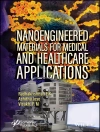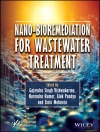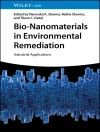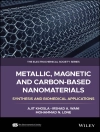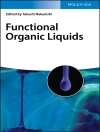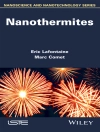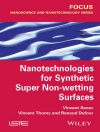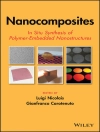The first overview of this topic begins with some historical aspects and a survey of the principles of the gas aggregation method. The second part covers modifications of this method resulting in different specialized techniques, while the third discusses the post-growth treatment that can be applied to the nanoparticles. The whole is rounded off by a review of future perspectives and the challenges facing the scientific and industrial communities.
An excellent resource for anyone working with the synthesis of nanoparticles, both in academia and industry.
Содержание
List of Contributors xiii
Preface xix
Part I Introduction to Gas Phase Aggregation Sources 1
1 History, Some Basics, and an Outlook 3
Hellmut Haberland
1.1 Introduction 3
1.2 Three Types of Gas Aggregation Sources 5
1.3 Development of the Magnetron Cluster Source 6
1.4 Deposition Machine and Mass Spectra 9
1.5 Some Experimental Questions 11
1.6 Deposition of Clusters with Variable Kinetic Energy 14
1.7 Outlook and Future Development 17
2 Principles of Gas Phase Aggregation 23
Patrice Mélinon
2.1 The Landscape 23
2.2 Step 2: Nucleation 24
2.3 Kinetic Nucleation Theory 26
2.4 Clusters in Real Gases 30
2.5 S > 1: Adiabatic Expansion 31
2.6 S ?a 1: Supersonic Beam with Buffer Gas 33
2.7 Size Distribution 33
3 Types of Cluster Sources 39
José A. De Toro, Peter S. Normile, and Christopher Binns
3.1 High-Vacuum Free Beam Sources 39
3.2 Generic Aspects of Design 39
3.3 Seeded Supersonic Nozzle Source (SSNS) 40
3.4 Thermal Gas Aggregation Source (TGAS) 42
3.5 Sputter Gas Aggregation Source (SGAS) 42
3.6 Laser Ablation Source (LAS) 45
3.7 Pulsed-Arc Cluster Ion Source (PACIS) 46
3.8 Pulsed Microplasma Cluster Source (PMCS) 47
3.9 Comparison and Specialization of Sources 48
Part II Modifications of Gas Phase Aggregation Sources 57
4 The Double-Laser Ablation Source Approach 59
Piero Ferrari, Jan Vanbuel, Yejun Li, Ting-Wei Liao, Ewald Janssens, and Peter Lievens
4.1 Introduction 59
4.2 Source Description 60
4.3 Studies on Bimetallic Clusters 66
4.4 Conclusions 74
5 In-Plane Multimagnetron Approach 79
Grant E. Johnson and Julia Laskin
5.1 Introduction 79
5.2 The Multitarget Single-Magnetron Approach 82
5.3 The Multimagnetron Approach 86
5.4 Summary 95
6 Adjustable Multimagnetron Approach 101
Lidia Martínez
6.1 Introduction 101
6.2 Design and New Parameters of Multimagnetron Gas Aggregation Sources 104
6.3 Possibilities in the Fabrication of Nanoparticles with Multimagnetron Approach 106
6.4 Summary, Perspectives, and Applications 117
7 Hollow Cylindrical Magnetron 123
Vitor Toshiyuki Abrao Oiko, Artur Domingues Tavares de Sá, and Varlei Rodrigues
7.1 Introduction 123
7.2 Project Design and Implementation 124
7.3 Characterization 126
7.4 Cluster Production 128
7.5 Alternative Cylindrical Geometries for Magnetron Sputtering 131
7.6 Concluding Remarks 132
8 High-Flux DC Magnetron Sputtering 137
Marco César Maicas Ramos and María del Mar Sanz Lluch
8.1 Introduction 137
8.2 Gas Flow 139
8.3 Oxygen-Assisted Synthesis 146
8.4 Ion Beams 148
8.5 Conclusions 152
9 High-Flux Metal Vapor Cell 155
Gail N. Iles
9.1 Introduction 155
9.2 Vapor Cell Components 156
9.3 Vapor Pressure 159
9.4 Methods and Techniques 163
9.5 Devices Using Metal Vapor Cells 167
9.6 Summary 171
10 Microwave Plasma Synthesis of Nanoparticles 175
Dieter Vollath
10.1 Introduction 175
10.2 Basic Design of Microwave Plasma Systems and Resulting Products 187
10.3 Realization of Microwave Plasma Systems for Synthesis of Coated Nanoparticles 195
11 Enhanced Synthesis of Aggregates by Reduced Temperature, Pulsed Magnetron Sputtering, and Pulsed Buffer Gas Delivery 203
Vitezslav Stranak and Rainer Hippler
11.1 Introduction to Nanoparticle Aggregation 203
11.2 Experiment 204
11.3 Kinetic Phenomena during Cluster Growth 205
11.4 Pulsed Sputtering of Metal Target 212
11.5 Pulsed Delivery of Buffer Gas 216
11.6 Cluster Mass Flux in a Gas Dynamic System 221
11.7 Conclusions 223
12 High-Power Pulsed Plasmas 227
Iris Pilch
12.1 Background: High-Power Impulse Magnetron Sputtering 227
12.2 Synthesis of Nanoparticles Using High-Power Pulsed Plasmas 230
12.3 Summary and Outlook 239
13 High-Pressure and Reactive Gas Magnetron Sputtering 243
Lakshmi Kolipaka and Stefan Vajda
13.1 Introduction 243
13.2 Types of Reactive Sputtering 244
13.3 Hysteresis Effect in DC Reactive Sputtering 244
13.4 Methods to Overcome Hysteresis 246
13.5 Arcing in Reactive Sputter Deposition 251
13.6 Methods to Overcome Arcing Problem 251
13.7 Modeling of Reactive Sputtering 254
13.8 Implementation of High-Pressure and Reactive Gas Sputtering in Gas Aggregation Sources (GASs) 257
Part III In-Flight Post-Growth Manipulation of Nanoparticles 269
14 Coating 271
Panagiotis Grammatikopoulos and Mukhles Sowwan
14.1 Core/Shell Nanoparticles 271
14.2 Fabrication Methods 273
14.3 Structural Modification via In-flight Coating 278
14.4 Summary 282
15 Nanostructuring, Orientation, and Annealing 287
Balamurugan Balasubramanian and David J. Sellmyer
15.1 Introduction and Scope 287
15.2 Control of Crystal Structures 287
15.3 Nanostructuring 294
15.4 Conclusions 298
16 Deflection and Mass Filtering 303
Marcel Di Vece
16.1 Introduction 303
16.2 Magnetic Deflection 305
16.3 The Time-of-Flight Mass Filter 306
16.4 The Reflectron TOF Mass Filter 308
16.5 The Quadrupole Mass Filter 308
16.6 Aerodynamic Lenses 310
16.7 The Wien Filter 312
16.8 Magnetic Sector 312
16.9 Cluster Ion Traps 313
16.10 Matter-Wave Interferometry 313
16.11 Comparison of Mass Filters 314
16.12 Mass Filtering Requirements for Applications 315
16.13 Conclusions 316
17 In-Flight and Postdeposition Manipulation of Mass-Filtered Nanoparticles under Soft-Landing Conditions 323
Joachim Bansmann, Armin Kleibert, Hendrik Bettermann, and Mathias Getzlaff
17.1 Introduction 323
17.2 In-Flight Manipulation of Cluster Beams 325
17.3 Soft Landing 327
17.4 Summary 333
18 In-Flight Analysis 339
Sergio D’Addato
18.1 Introduction 339
18.2 Electron Diffraction and X-ray Scattering Analysis of Clusters and Nanoparticles 340
18.3 Photoelectron and X-ray Absorption Spectroscopy 345
18.4 Magnetic Deflection Experiments 350
18.5 X-ray Magnetic Circular Dichroism Experiments 355
18.6 Conclusions 358
Part IV Perspectives 365
19 Nano- and Micromanufacturing with Nanoparticles Produced in the Gas Phase: An Emerging Tool for Functional and Length-Scale Integration 367
Paolo Milani and Luca G. Bettini
19.1 Introduction 367
19.2 Site-Selected Nanoparticle Deposition 369
19.3 Supersonic Cluster Beam Deposition 370
19.4 System Integration Approach by SCBD 375
19.5 Conclusions 380
References 380
Index 387
Об авторе
Yves Huttel received his Ph.D. degree from the University of Paris-Sud, Orsay, France. After his degree he worked at the Synchrotron LURE, France, at the University of Paris-Sud, France, and at the ICMM-CSIC, Spain. He was also a postdoctoral researcher at the Synchrotron of Daresbury Laboratory, UK, before returning to the CSIC at the IMM. He joined the Surfaces, Coatings, and Molecular Astrophysics Department at the ICMM that belongs to the Consejo Superior de Investigaciones Cientificas (CSIC), Spain, with a Ramon y Cajal Fellowship. Since 2007, he has been working at the ICMM as a Permanent Scientist and he leads the Low-Dimensional Advanced Materials Group. His research focuses on low-dimensional systems including surfaces, interfaces and nanoparticles, as well as XMCD, XPS and nanomagnetism.


